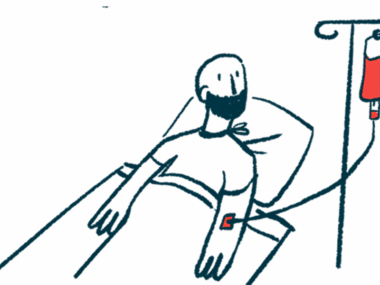Rituximab treatment effective for 4-year-old’s MuSK-MG: Report
Researchers say case 'strongly supports' treatment's use in young patients
Written by |

Rituximab may be safe and effective in treating young children with myasthenia gravis (MG) driven by antibodies that target muscle-specific tyrosine kinase (MuSK), according to a report detailing the case of a 4-year-old girl.
The girl was one of the youngest MG patients to have received rituximab, according to the researchers. The treatment significantly improved her condition and caused no clear side effects, which argues “for the use of rituximab as a first-line agent in children with MuSK myasthenia gravis,” they wrote.
The girl’s case was described in the study, “Young child with MuSK myasthenia gravis: treatment and remission with rituximab,” published in BMJ Case Reports.
MG is caused by self-reactive antibodies that target proteins important for nerve-muscle communication. Most commonly, these antibodies target acetylcholine receptors found on muscle cells, but in 5% to 8% of patients, they target another protein called MuSK.
In adolescents and adults with MuSK-MG, treatment may involve the use of rituximab (sold as Rituxan, among others), an antibody-based therapy sometimes used off label to treat MG, particularly in patients with treatment-resistant disease. Approved to treat some types of blood cancers and autoimmune diseases, rituximab works by lowering the numbers of B-cells, the immune cells responsible for producing MG-driving antibodies.
Rituximab treatment in children
Case reports of young patients receiving rituximab for MuSK-MG have been “rare,” the researchers wrote.
They 4-year-old girl in their report was born at 37 weeks of gestation with a diagnosis of mild hypoxic-ischemic encephalopathy, which occurs when the brain does not get enough oxygen before or shortly after birth. An MRI scan conducted at the time revealed no severe brain damage.
At a follow-up appointment, the girl had low muscle tone in the legs and reduced reflexes, which normalized within a few months. At age 2, she was noted to have mild upper eyelid droopiness (ptosis) and strabismus, or misalignment, in the left eye, which progressed to both eyes.
She also had generalized weakness, fatigue, and balance issues, and was suspected to have MG. Blood testing revealed elevated levels of anti-MuSK antibodies, confirming the MG diagnosis. The girl started treatment with liquid pyridostigmine (sold as Mestinon, with generic formulations available), which eased her ptosis.
Some months later, she was admitted to the hospital with ptosis and limb weakness, which eased after a five-day course of intravenous immunoglobulin (IVIG) therapy. Her pyridostigmine dose was increased and she was also started on prednisone, a corticosteroid.
After another episode of symptom worsening, she received an additional course of IVIG. The treatment initially eased her symptoms, but after a week the girl experienced an episode of high blood pressure, with shortness of breath that required invasive ventilation.
After she stabilized, doctors decided to start her on rituximab, due to the lack of efficacy and significant side effects she experienced from previous treatments. Rituximab was given at a dose of 250 mg weekly for four weeks, and it significantly eased her symptoms after one month.
At a six-month follow-up after the last rituximab dose, the girl’s symptoms had stabilized, with very mild ptosis. She was energetic and did not display weakness, shortness of breath, difficulty swallowing, or fatigue.
She has remained symptom-free in subsequent years, with no need for further dosing with rituximab, and was taken off prednisone. The girl is still being followed for evaluation of symptom recurrence. “Four years have passed since her first course of rituximab, and she continues to do exceptionally well,” the researchers wrote.
“Further clinical follow-up will determine if repeat treatments are needed; however, this case strongly supports the use of rituximab in young children diagnosed with MuSK myasthenia gravis,” they wrote.
The girl’s mother expressed satisfaction with the treatment. “When we first discussed the treatment (rituximab), I was hesitant since it would be an off-label use for her age, and I was hoping that it wouldn’t make her other health conditions worse in the process,” she said in a statement. “I will tell you right now that this is the best decision I have ever made for my daughter. I can’t believe what a different girl she is. She is now not only healing but thriving.”






Leave a comment
Fill in the required fields to post. Your email address will not be published.